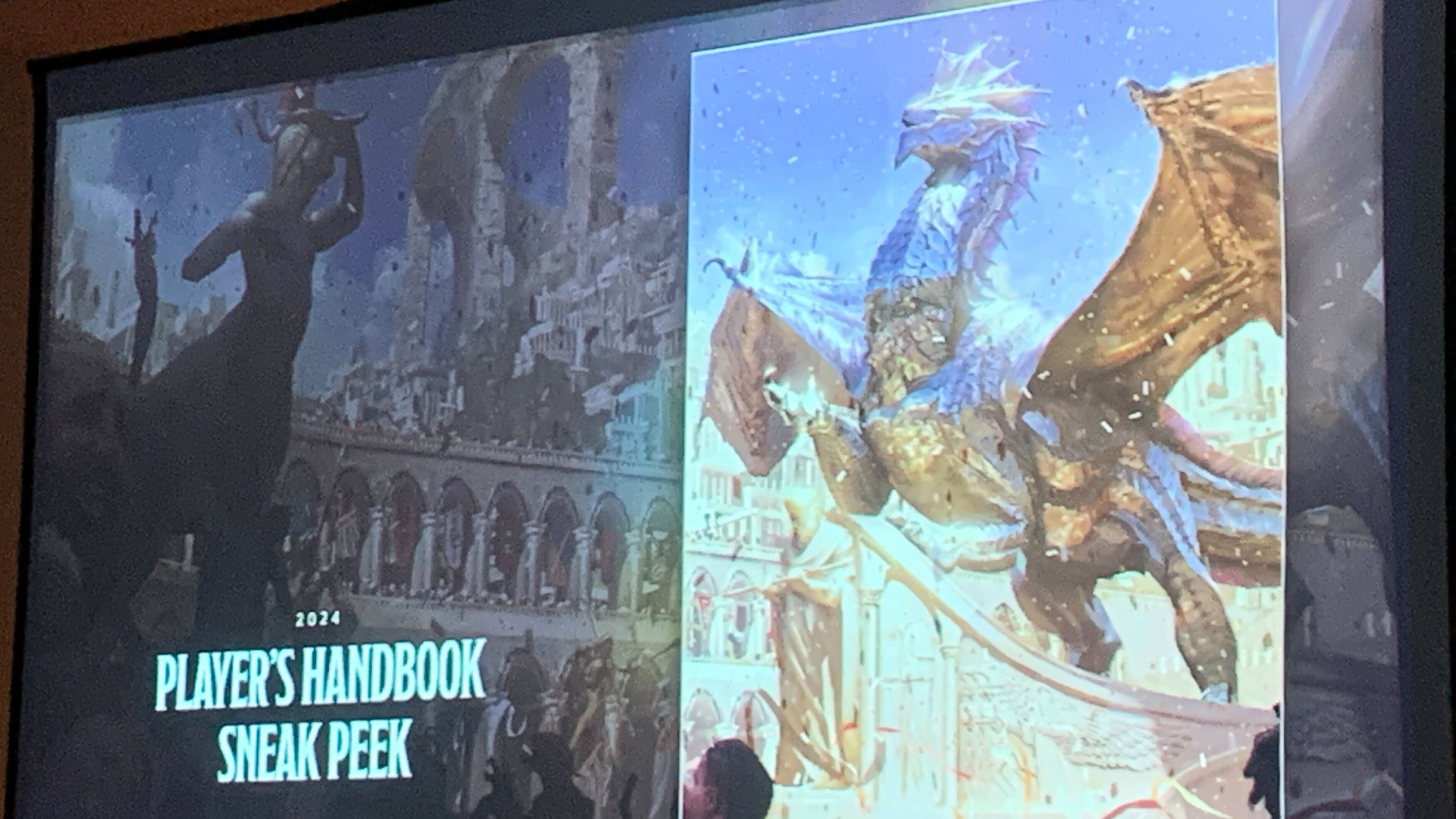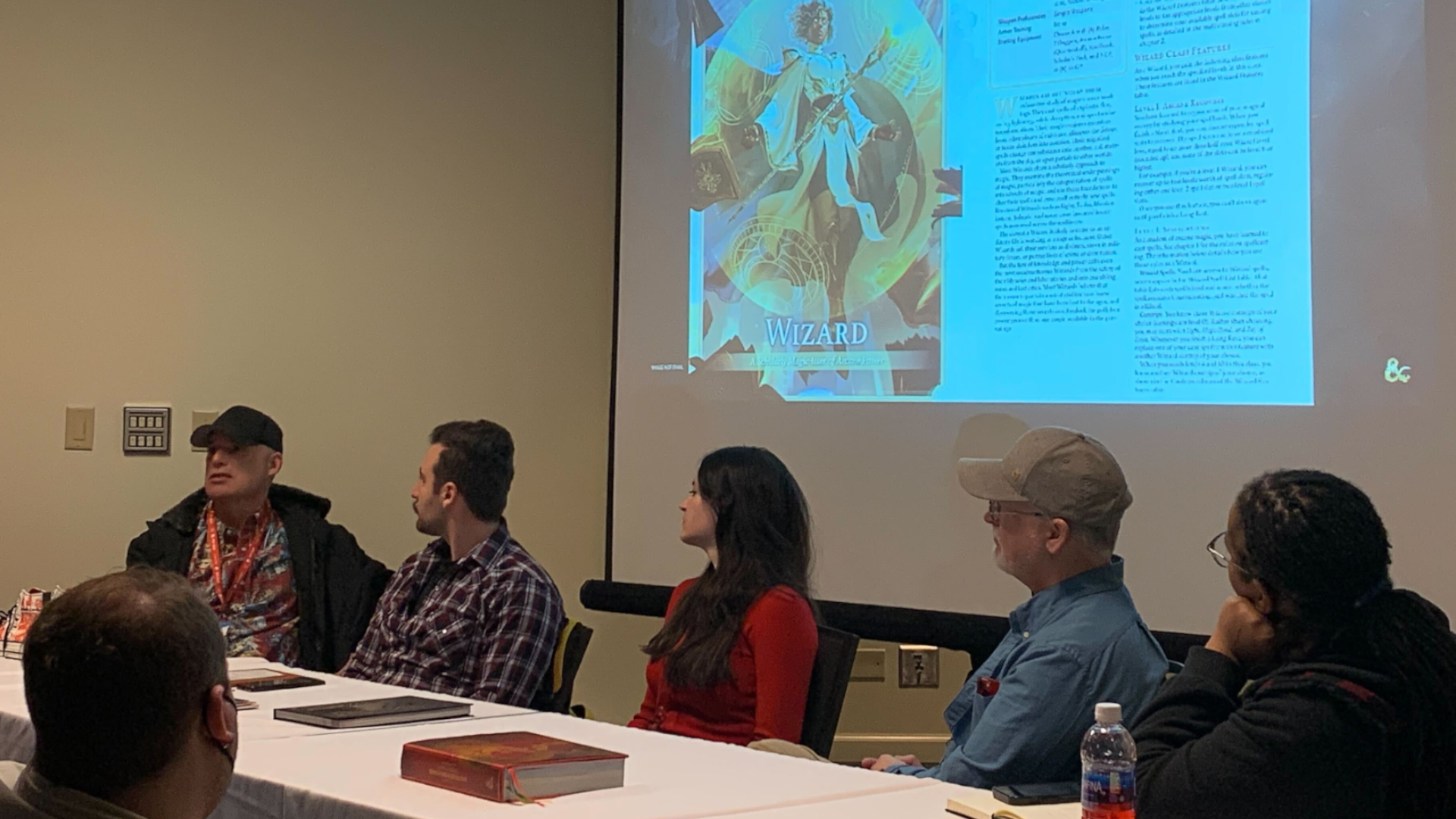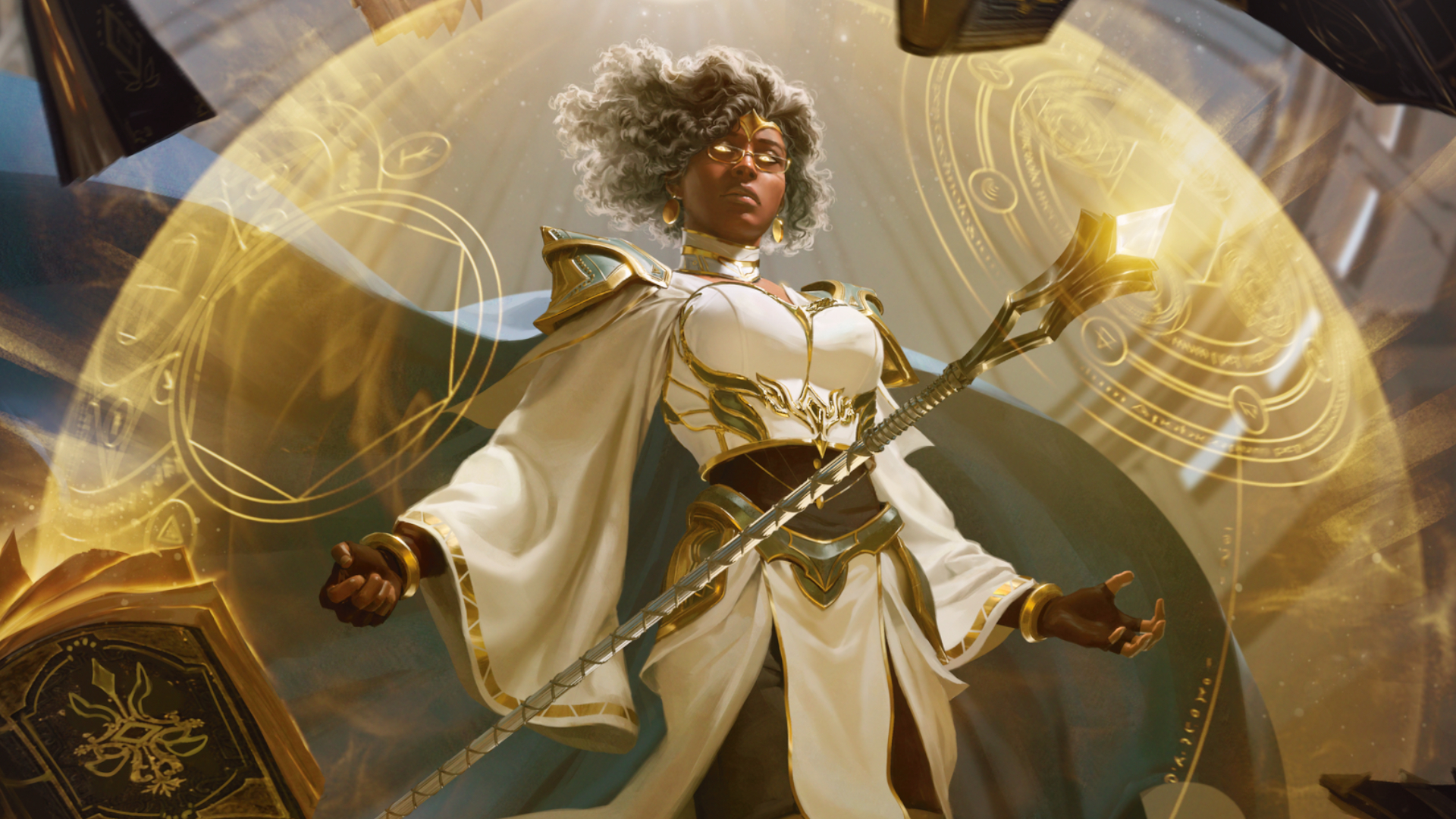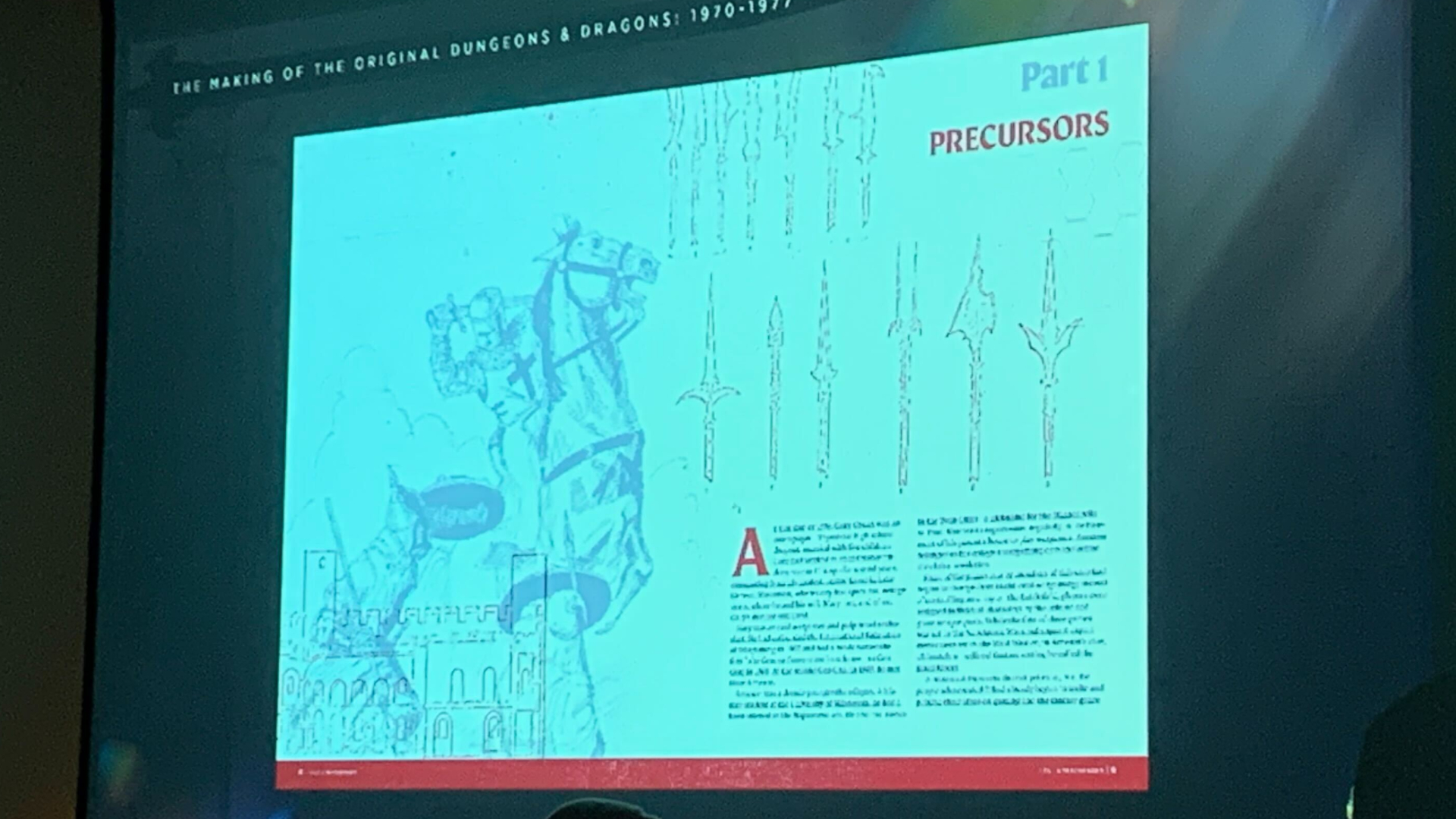
Changes to the D&D rules are all your fault.
No, really. When you're tinkering with something as beloved as D&D, you're going to upset someone. It's inevitable. But you're also going to make the game better for others. That's why game design architect Chris Perkins and his team have spent as long as possible listening to fan feedback, combing over data, and sending playtests into the wild. It's also why Dungeons & Dragons isn't getting a new edition like it might have done in the past, and why Fifth Edition is here to stay… for now.
"Historically, the reason to do a new edition the way our fans know it, like the whole 'burn down the game and build it up as something new,' really has to be a response to what the community is telling us either by what they're buying or what they're not buying," Perkins explains when we catch up with him at Gary Con. "By the end of the third edition, we were seeing a trend, a downturn [for] every product… And that's a signal to us… [but] the trend that we've seen in the last 10 years is not what we've seen with Third [Edition], not what we've seen with Fourth. The game is doing better and better and better. So we're not at a point in the life in Fifth Edition where we feel like, OK, the fans are telling us this is not the game for them. They're not saying that. They're saying 'we love Fifth Edition.' So then the question is, how can we make your Fifth Edition games better?"
Home(brew) improvements

For Perkins, the objective with updating one of the best tabletop RPGs is to ensure D&D's new core rulebooks are more accessible, straightforward, and informative. This isn't a flippant or cosmetic change, either. In his eyes, this will make running the game as a Dungeon Master or building a character easier. It's been 10 years since the last rulebooks came out, after all, and the team has learned a lot in that time.
"This is not a vanity press we're doing," says Perkins. "This is not me trying to prove myself as a designer to the world. We're trying to answer the question of 'what is the D&D that fans really want to play, and how do we deliver that for them? So in things like the Unearthed Arcana [playtests], we will sometimes put things in the articles that we know probably won't fly, that the community will push back on because they're not ready for it or they don't think it's right for the game that they want to play. We do that because we have to know, and that's the only way we can really know. So the playtest process has been very interesting to look at because I found that the fans don't want us to move too far from where Fifth Edition is now."
To an extent, that fondness for Fifth Edition (5e) simplifies things. Why try to fix what isn't broken?
The important thing there is to make sure that what you're getting is more than what you had, not less
Chris Perkins, D&D game architect
That feeds directly into the lack of new classes in these rulebooks. For Perkins, it's all about reducing overhead and complexity for new players. For anyone coming into D&D for the first time, 12 different classes (with a bonus one in the form of an Artificer) can be overwhelming enough as it is. Plus, the design team felt that there was already enough choice within a set 'role' – e.g. Fighters, Barbarians, and Monks offer three different approaches to being the party tank, while Clerics, Paladins, and Druids fulfill a similar function as the group's support. As soon as you venture out beyond those 12 core classes, Perkins says, you start to get repetition and choice paralysis.
In fact, Perkins is of the mind that the core rules may have too many classes to begin with.

Gary Con revealed plenty of juicy info on the new core rulebooks. Here are some details we picked up:
- 48 subclasses in the Player's Handbook, all with artwork
- Lore glossary to be included in Dungeon Master's Guide, explaining everything from Lolth to Castle Ravenloft
- Monster Manual has everything from old version, plus more, and all entries are getting finetuned
"Speaking frankly, [and] this is my own personal opinion, 12 classes is actually a lot," Perkins says. "If I were redesigning, if I could go back to 2012 to when we were talking about fifth edition for the first time, I would probably put a strong case forward that we could actually do with less classes in the core game. You know, keep the choices simple. Because when you're asking somebody to choose between a Sorcerer and a Wizard, to the untrained eye, it's not clear what the difference is until you start to drill down and you realize where they get their power from and how their spell-casting works. When you look at it superficially, they seem pretty much the same. And you know, what is the difference between a Barbarian and a Fighter? A Barbarian could almost be a subclass [for a] Fighter if we were designing this game from scratch."
On the topic of subclasses, though, Perkins has a very different opinion.
"Subclasses, as far as I'm concerned, [are] the Wild West," he adds. "There is no end of subclasses that we can do to basically explore a niche within a world."
This doesn't mean Perkins and co. are going to do away with any of the existing classes that already exist, however. The options we have now are here to stay – even if certain elements have been tweaked.
If this were a new edition, we might err on the side of taking the risk, of making the change, but it's not. So we're more conservative... That idea can wait for a later time
Chris Perkins, D&D game architect
"The important thing there is to make sure that what you're getting [with the new rulebooks] is more than what you had, not less. We don't want to take away any of the big toys that people enjoy," Perkins says. "That said, it's OK if some things go away because they still exist in the game. This is still Fifth Edition. So if you want to play something and there is an option that has changed and you don't want to play the changed version, that's OK. You can keep playing the character that you have, or maybe you're not ready to update your character yet because you're kind of at the end of a campaign. You can still pick off the new spell list. You can still pick the new feats that we're squeezing into the Player's Handbook. There are still going to be toys and things that you can enjoy."
Gaining inspiration

On the subject of rule changes, we were curious about whether a certain award-winning video game based on the Dungeons & Dragons world had any impact on decisions for this new spin on Fifth Edition. Baldur's Gate 3 omitted certain aspects and tweaked others, after all, so would the team be taking inspiration (no pun intended) from it for this pen-and-paper update? Not necessarily – Perkins compares the latest installment of Baldur's Gate to house rules. Specifically, he likens it to how DMs are encouraged to pick and choose the mechanics they enjoy. Developer Larian did exactly this to make sure the project worked as a video game first and foremost, and Wizards of the Coast apparently encouraged this.
One of the delightful features of D&D that I don't think gets enough press is that it's eminently flexible
Chris Perkins, D&D game architect
Perkins explained that, "as a game architect on D&D… I'm making sure that the game's foundation is solid and that what we're building is structurally sound and will be aesthetically pleasing to those who exist and play within the game. So, in early conversations with Larian, they're talking about the things that they want to do and the things that they have to do. The thing we just kept telling them is, you have to do what's right for your audience, and then you have to do what's right for your platform. As long as your game has owlbears and displacer beasts, and there is this feeling of different roles in the party and all the hallmarks of D&D, you'll be fine."
Still, Baldur's Gate 3 proves that tweaks can be made for D&D 5e and still retain its core feel – something we're staring down the barrel of with the revised core rulebooks.

"One of the delightful features of D&D that I don't think gets enough press is that it's eminently flexible, and we don't expect people to play it the same way," Perkins tells us as we round up our chat. "And that means we can jump from Baldur's Gate 3 to a tabletop game to some other expression of D&D and very few people blink an eye. We [just] provide tools and inspiration."
If Perkins and the team have their way, they'll continue providing those tools and inspiration for a long while yet.
For some ideas on what to run ahead of the new rulebooks, check out what we think are the best D&D books so far. As for something totally different, drop in on our guide to the best board games.







